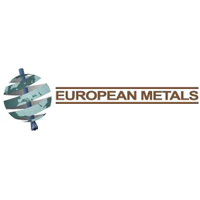European Metals MD Keith Coughlan commented, “The move to modelling the production of lithium hydroxide is being undertaken due to the increased use of this product in Europe and the higher revenues associated with this. Czech and broader European battery manufacturers are moving towards the production of ever more efficient batteries and with our vision of supplying to the European market we need to keep in step with the market. The updated PFS that we aim to release in the next two months will include this work, the recent improvements in roast recoveries and on-going optimisation of the mine plan. We believe these incremental steps will provide a significant improvement to the economics of Cinovec and align ourselves with European requirements for lithium product. The permission granted for the geotechnical drilling has allowed the Company to commence these works before winter to allow a final design for the portal and decline position which form a large part of the ongoing EIA process.”
European Metals Holdings Limited (LON:EMH) is pleased to provide a project update highlighting recent significant advancements made in the development of the Cinovec Lithium-Tin Project .
HIGHLIGHTS
· Work has commenced on an update of the Preliminary Feasibility Study to model the production of higher value lithium hydroxide due to its increasing use in lithium ion batteries. This study will be finalised over the coming two months.
· Leach recoveries of 94-95% lithium have been replicated in recently completed confirmatory laboratory scale roasting and water leaching tests in Germany. Locked cycle testwork will commence post the lithium hydroxide study to model the selected route.
· Permits have been granted for the commencement of geotechnical drilling at the project.
Work has commenced on the development of an updated Preliminary Feasibility Study (PFS) modelling the economics of the production of lithium hydroxide from Cinovec ore. The updated PFS includes a process flowsheet whereby battery grade lithium hydroxide is precipitated directly from the roast and water leach steps. The move to developing this process has been made as market forces continue to move in Europe towards the production of advanced technology batteries requiring the input of higher value lithium hydroxide rather than carbonate. The Company anticipates announcing the results of the PFS over the coming two months.
The Company has also recommenced testwork at Dorfner Anzaplan in Germany. Initial testwork was focused on replicating results obtained in laboratory scale testwork and reported on 28 March 2018 (Lithium Recoveries Improved to 95%). Similar results were achieved in 6 tests completed enabling the roasting feed blend and chemistry to be locked in and the stated recovery improvements to be used in future project and economic assessments. Planning now continues to commence locked-cycle pilot testwork in September 2018 at Anzaplan with the selected lithium product (ie carbonate or hydroxide).
The Company will commence geotechnical drilling for the portal and decline positions of the planned underground within two weeks. Initially four holes will be drilled at the site with the results from the drilling being used to finalise the preliminary design of the box cut and initial decline.
The PFS general arrangement designs for the portal entries, the mining infrastructure and the milling plant have been updated over recent weeks to provide a more comprehensive design to be submitted as part of the Environmental Impact Assessment (EIA) for the project.


